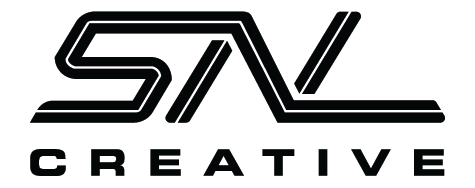Polyjet
SUBMIT YOUR FILE FOR A FREE QUOTE!
Polyjet
3d printing has resolution and multi-material capabilities of PolyJET 3d printing make it a good source for small and large concept prototypes and master patterns. Ideal for character models with fine sculpting detail, Polyjet resins can be painted, cast, and custom finished. Simulate over-molding, build flexible, translucent, and colored parts, to create complex models with exceptional detail.
PolyJET 3d printing is similar to an inkjet printer where liquid polymer is sprayed in exacting detail and instantly cured with a single swipe of the printer head. In high resolution parts these layers can be as thin as 14 microns. Finished parts can be used as is or for higher production volume, they can be used as the master parts for mold creation.
PolyJET materials are available in hundreds of colors and can be used in a single print.
POLYJET BENEFITS
- High Resolution
- High Speed – in some cases same day turnaround
- Fine detail and smooth surfaces directly off machine
- Variety of durometers and colors can be printed in same part
- Hundreds of color options
- Prints complicated geometries and living hinges
APPLICATIONS USING POLYJET 3D PRINTING
- Presentation models
- Master patterns
- Complex parts
- Simulated Overmolding

PolyJET princess figure showing multi-color print. There is no need for paint or finishing.

PolyJET lollypop model testing different color combinations before going to production.
MATERIALS
- PolyJet technology offers a diverse range of materials, enabling the creation of prototypes and parts with varying properties, from rigid and transparent to flexible and biocompatible. Here’s a curated list of available PolyJet materials, each linked to its detailed description:
- Vero™ Family
A versatile group of rigid photopolymers available in multiple colors, ideal for producing realistic prototypes with smooth surfaces and fine details. - VeroVivid™ Color Resins
These materials add vibrant, translucent colors to 3D printed parts, enabling the simulation of over 500,000 unique color combinations when blended with other resins. - Agilus30™
A flexible, rubber-like material with enhanced tear resistance, suitable for applications requiring repeated flexing and bending. - Digital ABS Plus™
Simulates standard ABS plastics, offering high impact resistance and toughness, ideal for functional prototypes and tooling. - RGD720
A translucent, multi-purpose photopolymer with high dimensional stability and surface smoothness, perfect for concept modeling and design verification. - High Temperature
This material offers high thermal resistance, making it suitable for applications requiring heat-resistant parts. - Biocompatible Materials
Rigid photopolymers designed for medical applications, offering high dimensional stability and optical transparency, suitable for applications requiring prolonged skin contact. - Tango™
A family of rubber-like materials ideal for applications requiring soft touch, non-slip surfaces, or shock absorption. - VeroClear™
A transparent material similar to polymethyl methacrylate (PMMA), used to simulate clear and transparent products.
For a comprehensive overview of all PolyJet materials, you can visit the Stratasys PolyJet Materials Catalog.
Each material is engineered to meet specific application requirements, ensuring that you can select the best option for your project’s needs.
- Vero™ Family
| Category | Guideline / Best Practice | Notes |
|---|---|---|
| Technology | PolyJet – full-color, multi-material, and transparent part printing | Ideal for visual models, packaging prototypes, miniatures, and medical/educational applications |
| Build Envelope | 350 x 350 x 200 mm (13.8 x 13.8 x 7.9 in.) | Max size for full-color builds |
| Resolution | Horizontal (XY): 600 dpi Vertical (Z): 16 microns (0.016 mm) |
High-fidelity surface finish and fine detail |
| File Types | Use .3MF (preferred), .OBJ + MTL + texture, or .VRML | STL files do not retain color or texture |
| Color Assignment Methods | – By Object (solid color) – By Face (localized features) – Texture Mapping (logos, realism) |
For custom branding and photorealistic parts, use texture maps |
| Texture Tips | Apply UV texture maps with proper unwrapping; preview with Microsoft 3D Viewer or similar tool | Recommended for accurate logo placement or graphic wraps |
| Transparency Support | Supports opaque + transparent in same part | Define transparency in texture image (with alpha) |
| Color Matching | Provide RGB or Hex color values | You can also upload visual references for color fidelity |
| Multi-Material Support | Use multi-body CAD models with assigned materials and colors | Specify material-color zones in the quote notes or upload annotated drawings |
| Best File Prep Practices | – Export in 3MF – Compress all assets in a .zip (for OBJ/VRML) |
Keeps color and texture files linked |
